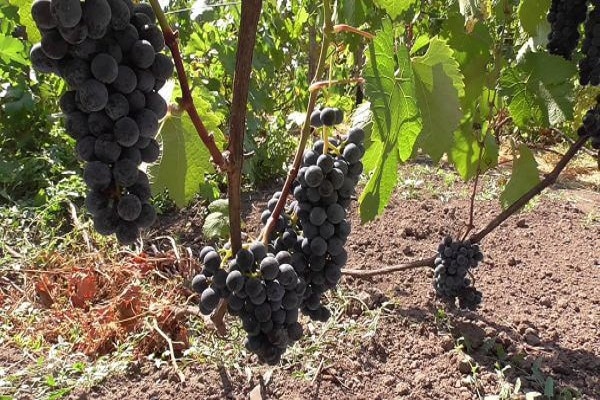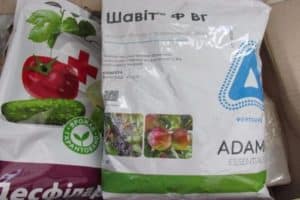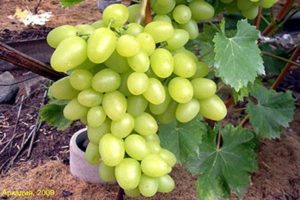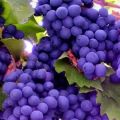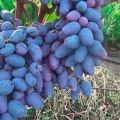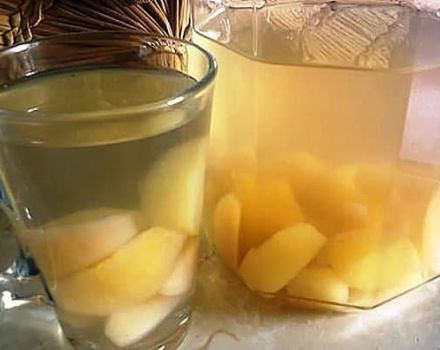Description and characteristics of the grape variety Livadiysky Black, history and rules of cultivation
The breeding qualities of grape varieties predetermine the main direction of the use of fruits. For fresh consumption, it is recommended to work with table varieties. If you want to get high-quality raw materials for making wine, you must give preference to technical ones. There are generally recognized leading varieties that have proven themselves only on the positive side, one of which is a grape called Livadiyskiy Black.
Description of the variety Livadiysky Black
The name of the variety immediately speaks of one of the characteristics of the grapes. The plant forms berries that have a rich dark color, becoming almost black at maturity.
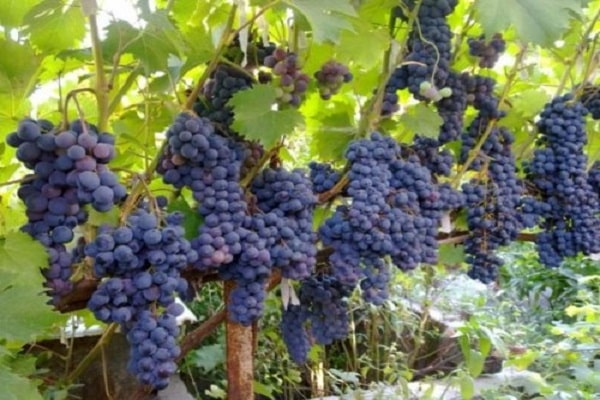
Historical reference
Livadiyskiy Cherny owes its appearance to the well-known institute of winemaking "Magarych", thanks to whose works many worthy varieties have seen the light. The plant was obtained by growing on experimental sites, where the new species showed good resistance to grape diseases and high yield rates.
Bush structure
The grape bushes form tall, but they do not have a fast growth rate. They are able to withstand a significant number of bunches. Mature plants can hold 80 eyes. At the time of flowering, bisexual flowers are formed.
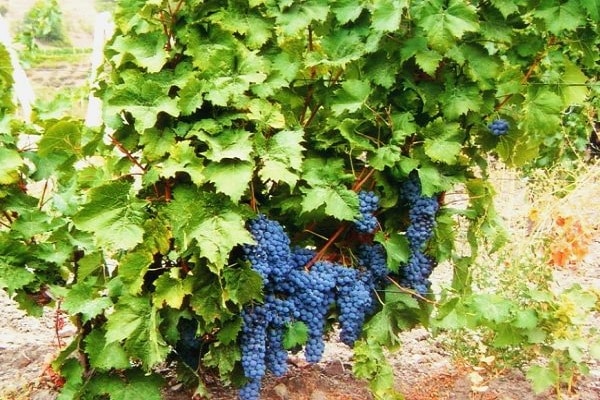
Vine
A powerful vine gains its strength in the 4th year of cultivation. The number of fruiting shoots can reach 80%. On average, there are 1.4 clusters of grapes per shoot.
Bunch
Bunches of cylindrical grapes are not very large. On average, their weight varies within 250 g.

Advantages and disadvantages
The grape variety is considered an ideal raw material for wine making. It is unpretentious in cultivation and is able to withstand exposure to low temperatures. Its advantages include:
- good yield indicators;
- optimal combination of sugar and acid in fruits;
- high juice content.
One of the advantages of the grape variety is its increased resistance to diseases of fungal origin.
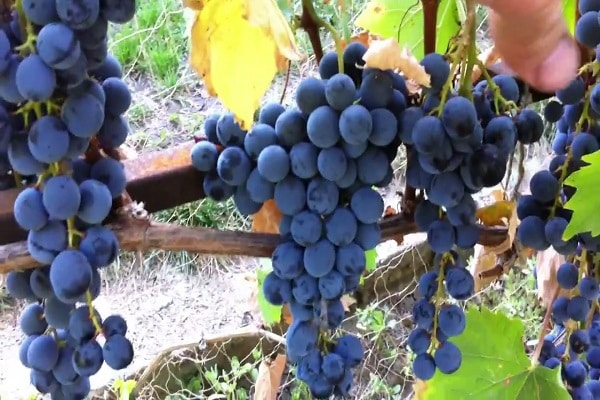
Technical characteristics of Livadia
The grape variety is in demand today in the horticultural market due to its technical characteristics. The culture is actively and successfully grown on private household plots and on large farms.
Type of grapes
Livadiysky Black belongs to the technical types of varieties, which indicates the possibility of its cultivation on an industrial scale and its use as a raw material for making wines. The taste qualities of the berries received high tasting ratings, and today the variety is one of the most famous industrial grape crops.
Compliance with technical grade standards
When comparing with well-known other grape varieties, it can be noted that the indicators of Livadiysk are not inferior to them. Some of them, for example, Krymsky surpasses it in sugar content, but at the same time the acidity in berries is higher.
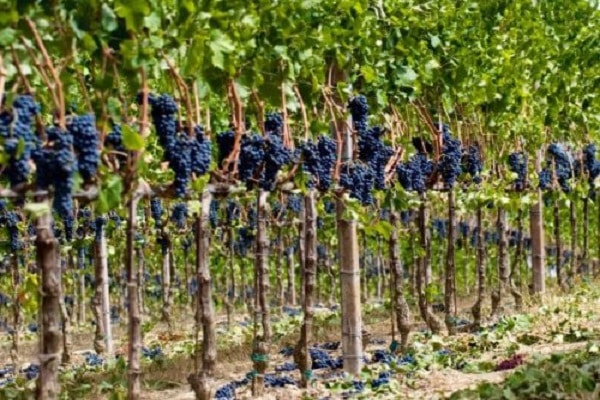
Ripening period and yield
The variety is characterized by an average ripening period. From the beginning of flowering to harvest, an average of 130-140 days pass.
Typical diseases and pests
Livadia grape is resistant to the most dangerous grape diseases, successfully copes with mildew, oidium and gray rot. Plantings may suffer from apoplexy, powdery mildew, white rot.
For prevention purposes, spraying with Bordeaux liquid and vitriol solution is carried out.
A decrease in yield indicators is observed with the invasion of aphids, weevils, and worms. To combat them, special drugs are used. They negatively affect the return of the fruit of the wasp, therefore, their nests must be destroyed and the fruit must be protected with a shelter.
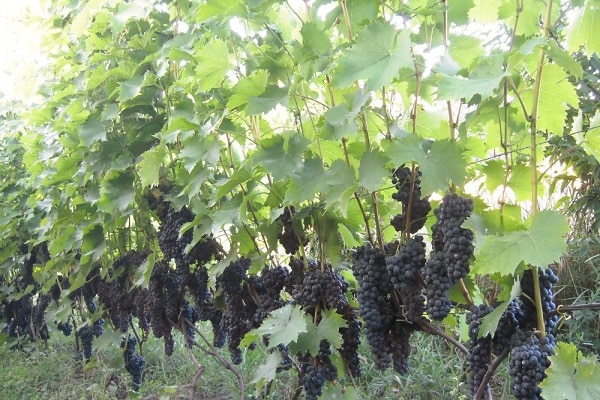
Description of the berry
The grapes are medium in size, each weighing from 1.5 to 2 g. They have a dark color and juicy flesh with nutmeg notes, there is a purine bloom on the skin. The juice content is capable of reaching 90%. At the time of ripening, the fruits are easily removed from the stalk. They contain 26% sugar and 8 g / l acid, this combination is considered optimal for making wine.
Tasting assessment
Thanks to the optimal acidity, sugar content and color saturation, grapes are used today in winemaking. It produces light dessert wines with hints of nutmeg and prunes, notes of chocolate. Experts appreciated the taste of the fruit and the variety was assigned high values on a 10-point scale. Dry wine received 7 points, dessert - 8 points.
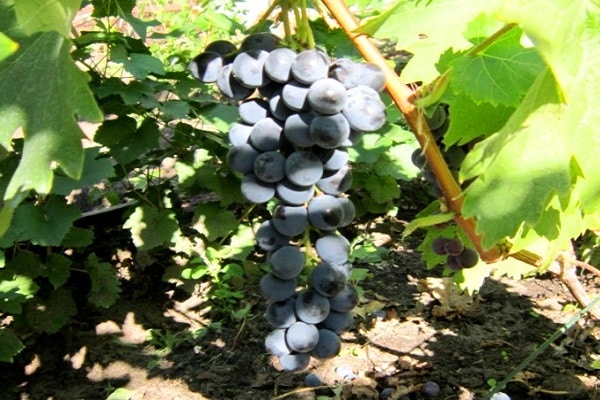
Energy value
The significant sugar content determines the high calorie content of berries. 100 g of fruit contains 70 kcal.
Acidity level
The acidity of grapes is 8 g / l, which is considered the best indicator for industrial varieties.
The benefits and harms of eating
Grapes are a valuable source of vitamins and minerals, which can compensate for the deficiency of nutrients in the body. Due to the high sugar content, fruits are not recommended to be included in the diet for people with excess weight and patients with diabetes.
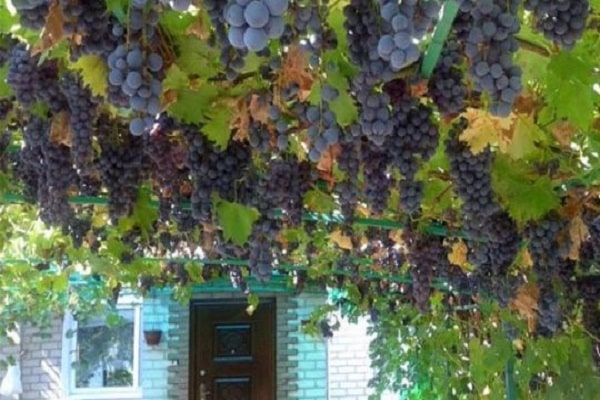
Grape berries are useful for problems with blood pressure, they have a positive effect on blood vessels and prevent the risk of atherosclerosis. They have the property of thinning the blood, therefore, they reduce the risk of blood clots.
Due to its high iron content, the fruit helps fight anemia.
You should not include grapes in the diet for people suffering from hypersensitivity of the teeth, as acid leads to an aggravation of the situation. For the same reason, its use should be approached with caution by those who suffer from high acidity of gastric juice.

Landing in open ground
The commencement of open grounding operations varies by region. Before planting, the root system is soaked in a plant stimulator, which increases its survival rate.The planting hole is prepared in advance, approximately 2 weeks before the start of work, a hole is formed with a depth of 80 cm.For heavy soil, it is required to create a drainage layer, which will help to avoid stagnation of water and decay of the root system.
Disembarkation dates
For the central regions, planting work is started in the absence of frost return and sufficiently heated soil. In most regions, such a period is considered May, when the ambient temperature reaches a stable value of +5 C.
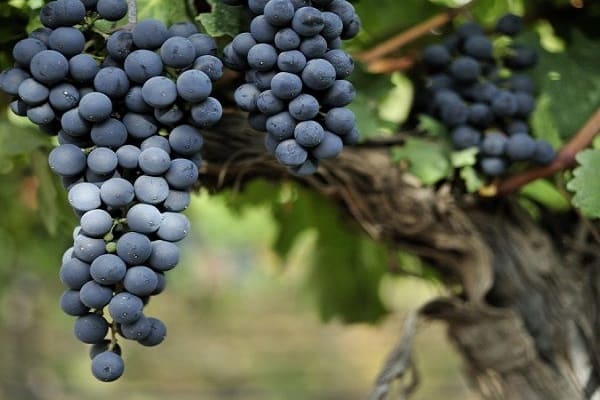
What to look out for when landing
Livadia grapes are picky about the soil, so you should be careful when choosing a place of permanent cultivation. It should not be in the shade, there should be a lot of light and heat input. To do this, choose a sunny area protected from gusts of wind.
The soil should be black earth, when planting it is enriched with mineral fertilizers, and the plant must be supported.
Agricultural technology and care
The cultivation technique and plant care are standard. It is required to control the adequacy of soil moisture, to do pruning, to carry out preventive treatments to protect against diseases and pests. During the growing season, fertilizing with organic and mineral fertilizers is carried out.
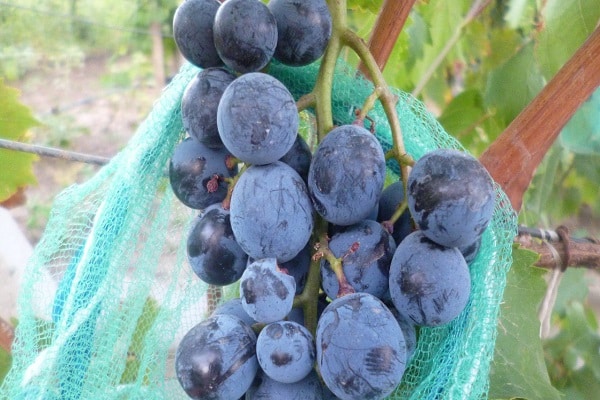
Cutting the vine
The formation of grape bushes is carried out in the second year. Pruning is carried out several times:
- in the spring - remove broken, damaged shoots that have not survived winter;
- in summer, non-fruiting branches are removed, pinching and thinning of the green mass is carried out;
- in the fall - the bush is prepared for wintering and covered.
When pruning in the spring, use the method of fanning the formation of shoots. When forming a bush, 6-8 strong "sleeves" are left, placing them in different directions on the trellises. On each of them 5-6 vines are left, which are cut into 2-3 eyes.
Watering and fertilizing
During the season, at least 3 full waterings are carried out. For every square meter of planting, there should be 50 liters of water. The first abundant watering is carried out with warm water until the first buds bloom. The second is repeated at the time of flowering, and the third - 14 days before collecting the brushes. Additional irrigation is determined based on the climate and rainfall sufficiency.
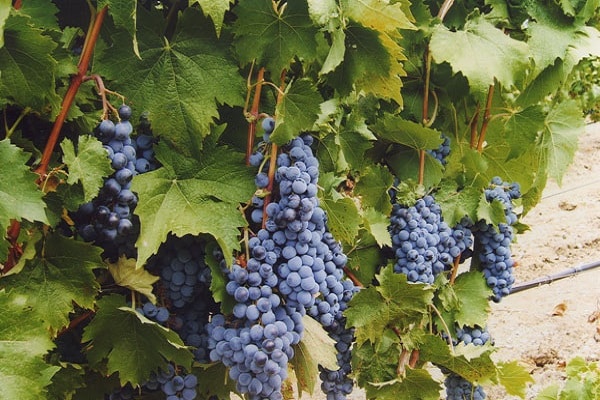
In the spring, nitrogen-containing preparations are introduced, which promotes the activation of plant growth. During the flowering period, the soil is enriched with phosphorus and potash fertilizers.
Preventive measures
In order to prevent diseases, they are sprayed with fungicides before and after the flowering of the plant. If signs of anomaly are found, the procedure is repeated. To reduce the risk of infection, shoots are thinned, diseased parts are removed. The soil must be periodically loosened, avoiding stagnant water. A good effect is ensured when mulching, for this a 5 cm layer of straw, mown grass or peat is formed near the trunk.

We fight diseases and pests
To combat pests and diseases, targeted drugs are used, of which there are a huge number of them on the market for gardening products. Spraying with Bordeaux liquid and copper sulfate are effective. Compliance with the rules of watering, pruning and feeding will help prevent plant health problems.
Harvesting and application of the crop
Harvesting in the southern regions begins after 130-140 days from the moment of flowering. In the northern regions, the ripening period determines the climate and the number of warm days, it can fall on the beginning of October. It is not worth delaying the work, as with prolonged presence the berries lose their taste and begin to fall off.
